Jill Sutherland
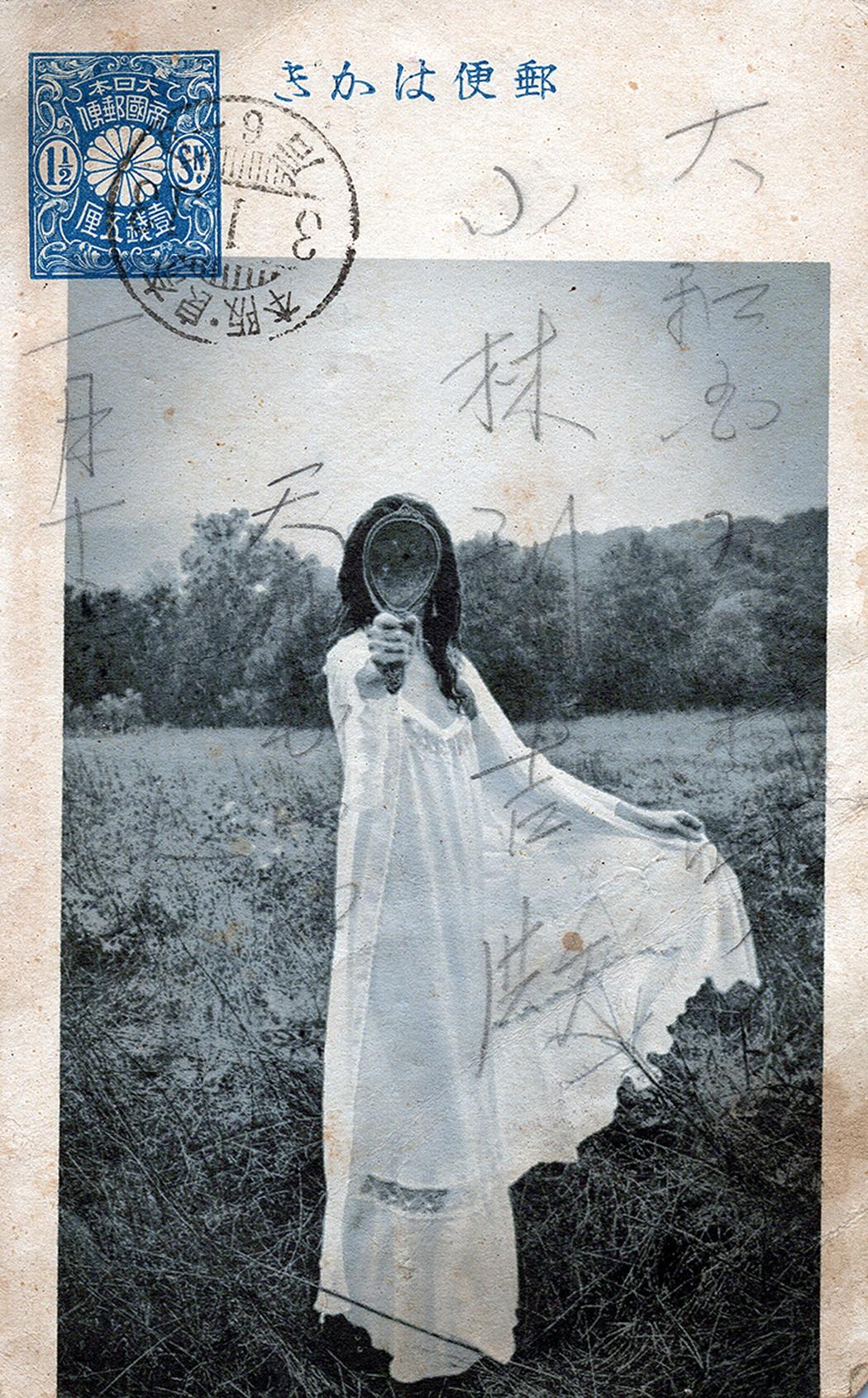 Jill Sutherland | Return To Sender
Jill Sutherland | Return To Sender
Your work blends personal narrative with universal emotion. How do you approach vulnerability in your portraits?
Portraits embody strength through vulnerability. There’s courage in being willing to be seen, whether that’s seeing ourselves clearly or witnessing others in their truth, even when filtered through fantasy or illusion. Photography allows us to explore the many masks and forms of the human experience, and that act of witnessing is inherently vulnerable. In my own work, I often use personal narratives to tap into that space. The more personal the work, the more universal the meaning.
How did your background in industrial metalworking influence your visual language and approach to artmaking?
My background in industrial metalworking has deeply shaped my visual language by pushing me to explore the feminine as a powerful, central voice. Working in what was often a male-dominated ‘boys club’ created a personal need to reclaim the feminine through archetypes like the muse, the goddess, the witch. I began the Circle of Doors Tarot project while still immersed in that industrial world, driven by a desire to understand and honor the shifting seasons of a woman’s life. That exploration of self-discovery continues to echo throughout my work, because often, that which is seeking, is the thing.
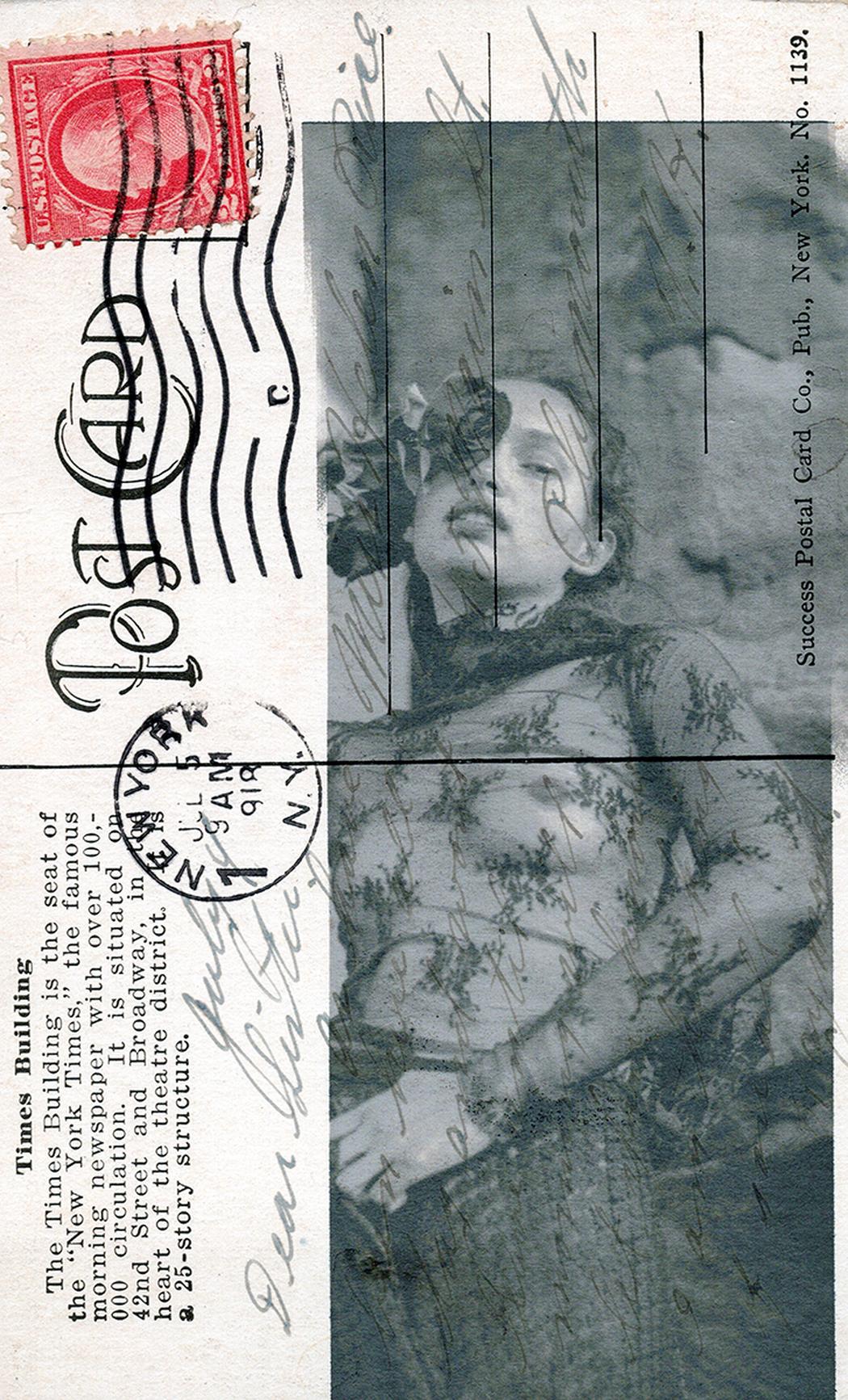 Jill Sutherland | Theatre District
Jill Sutherland | Theatre District
In what ways has the loss of your mother shaped your artistic journey and themes of feminine energy in your work?
Losing my mother profoundly shifted the way I approach both life and art, instilling a sense of urgency, and a need to live and create with intention, depth, and emotional honesty. I feel a quiet pressure to make something meaningful, honoring the fleeting nature of time through work that holds weight. Her absence deepened my interest in spiritual narratives and the unseen — legacy, memory, connection. It’s also led me to explore feminine energy in all its complex aspects ranging from strength to softness, presence to absence. I’m drawn to photographing others in a way that feels timeless, almost like offering a small piece of permanence in a world that’s constantly slipping away. There’s a romantic, even mournful quality to photography that I find comforting: the idea that a single image can hold someone’s essence long after they’re gone. This is the kind of beauty I seek to create.
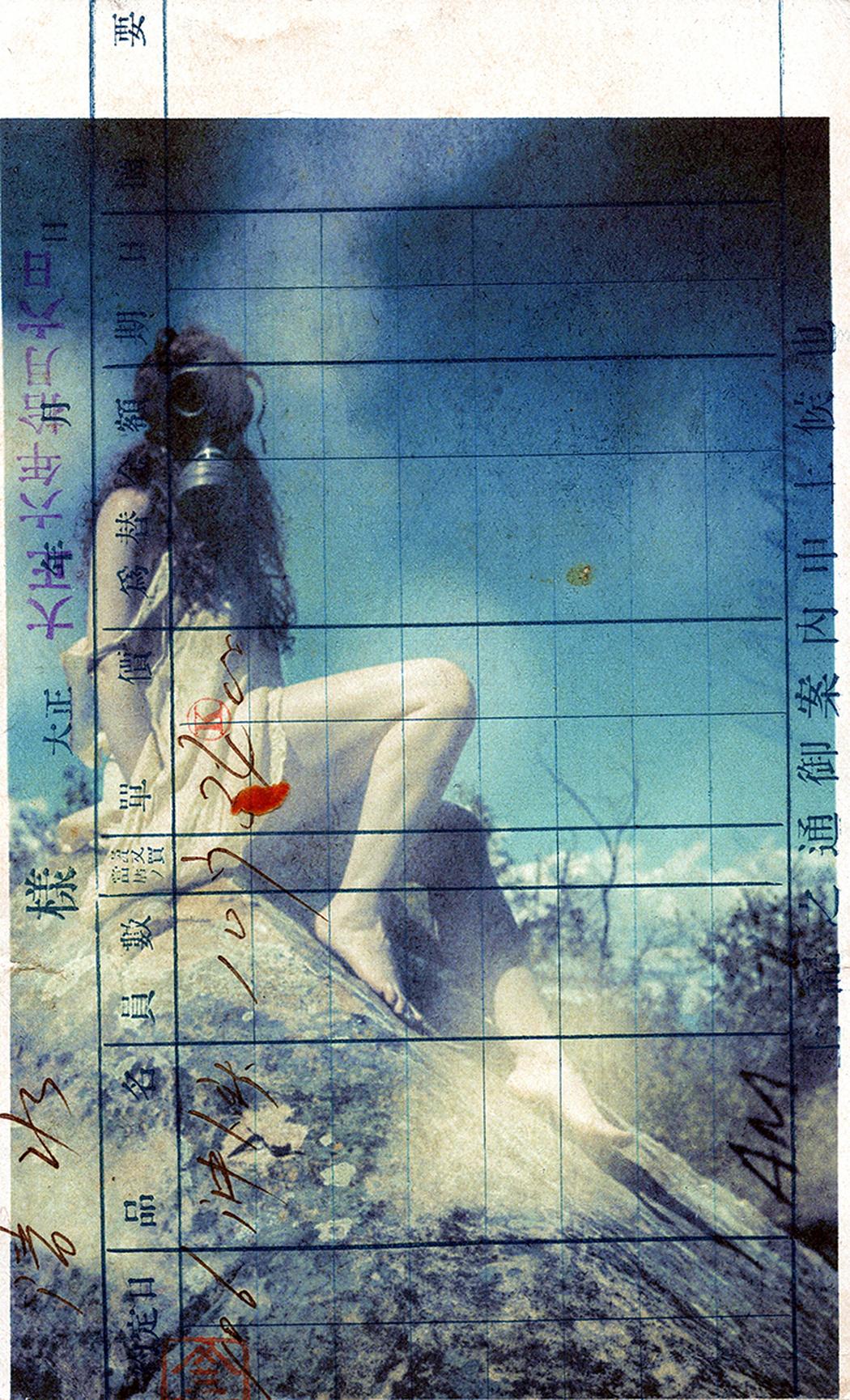 Jill Sutherland | The Grid Of Memory
Jill Sutherland | The Grid Of Memory
The “Correspondence Series” features layered portraits with vintage postcards. What inspired this project and what do postcards symbolize for you?
I’ve always been drawn to old, forgotten things — objects that carry the energy of another time. Postcards, in particular, feel like tiny relics of human connection. Whether the message is deeply personal or seemingly mundane, there’s something profound in the act of sending a few handwritten words across space and time. This series grew out of my fascination with the idea of correspondence — the way we reach for each other, attempt to connect, and leave behind traces of that exchange. I love the rawness of handwriting from different eras and languages, and how those fragments now live again when layered with portraiture and communicate across generations as a bridge between the past and the present.
How do you select the found postcards and integrate them into your compositions? Do you seek specific messages or aesthetics?
I’ve become fascinated with postcards and letters from the early 1900s — especially Japanese postcards, which feature beautifully expressive calligraphy I can’t fully decipher. That mystery adds to their allure; they feel like visual poetry rather than direct communication. I’m drawn to both the aesthetic and tactile qualities — old penmanship, stamps, paper textures, and the fading marks of time. American letters from the same era also captivate me, particularly for their elegant handwriting, which feels like a lost art form. I don’t seek specific messages as much as I seek a feeling — a sense of place, a trace of someone’s voice from the past. Integrating these postcards into my work is a way of reanimating them — giving new life to personal artifacts and transforming them into portals that connect memory, distance, and time.
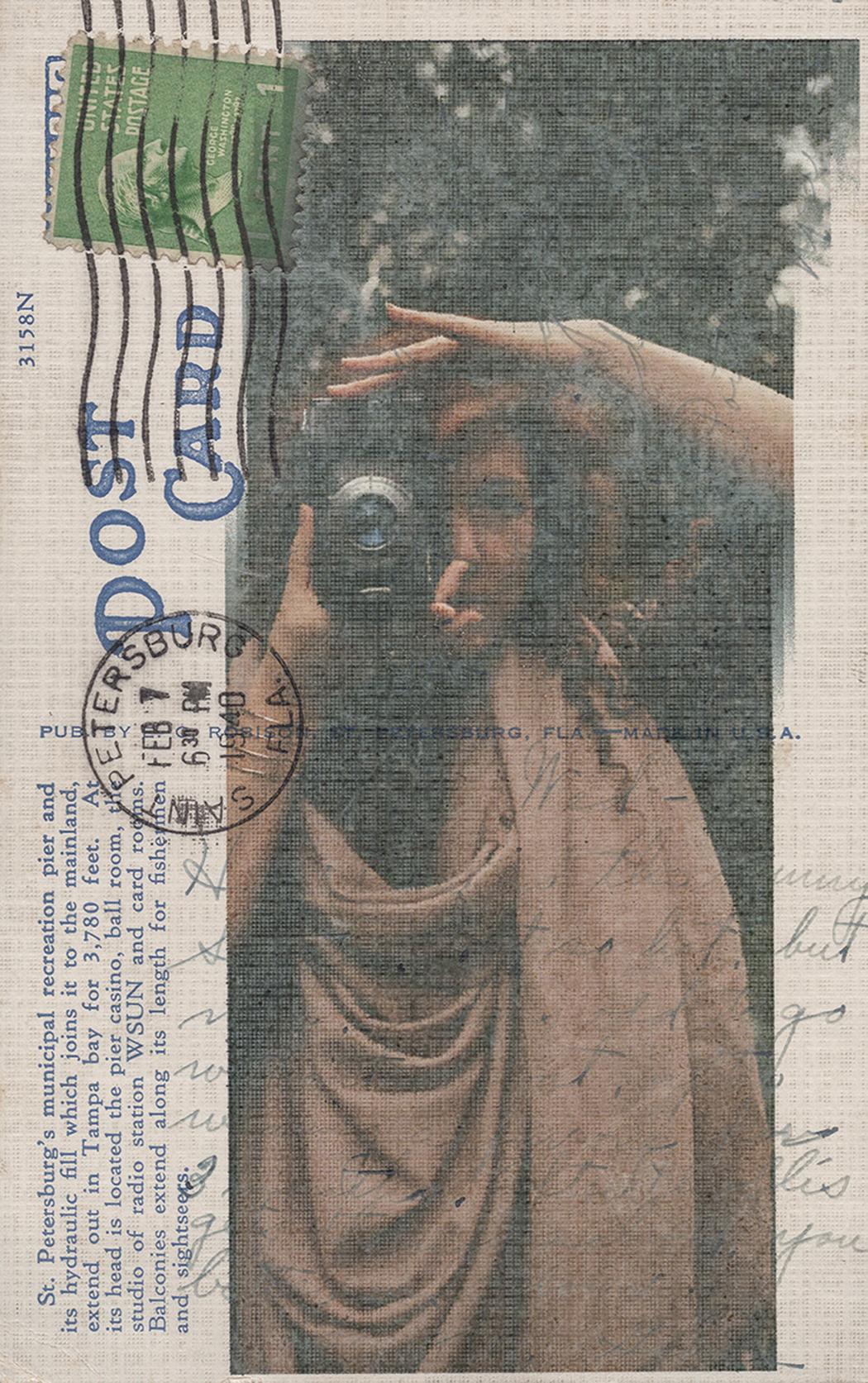 Jill Sutherland | Sightseer
Jill Sutherland | Sightseer
There’s a strong interplay between presence and absence in your images. What role does memory play in your practice?
Memory is central to my work, not as documentation but as atmosphere. I’m drawn to the feeling of being transported by blending timelines, history, and nostalgia into the present to create a kind of visual time machine. I use shadow, anonymity, and silhouette to evoke mystery and emotional depth. Absence becomes as meaningful as presence, inviting the viewer to bring their own memories and interpretations. My images often feel like fragments of a world just out of reach which is personal yet anonymous, both familiar and dreamlike, providing a tension between what’s seen and what’s suggested.
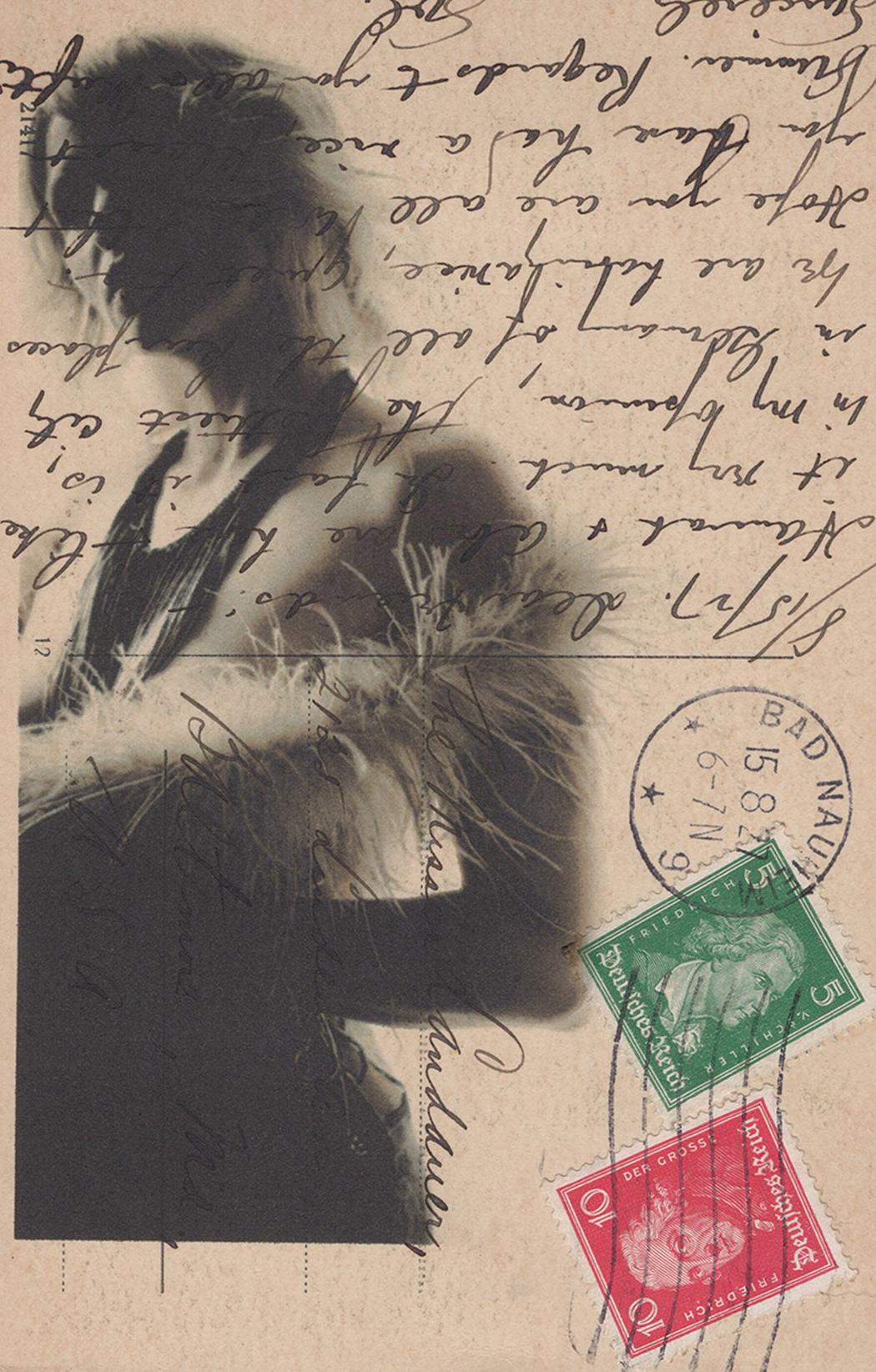 Jill Sutherland | Postmarked Ghosts
Jill Sutherland | Postmarked Ghosts
Much of your art explores dualities—light and shadow, masculine and feminine. How do you balance these opposing forces visually?
Dualities reflect the complexity of being human. Light and shadow, masculine and feminine — they’re not just opposites, but interconnected forces that shape how we perceive and feel. Visually, I play with contrast — using shadow to conceal, light to reveal, and allowing both to exist in tension. I often let silhouettes, textures, and ambiguous forms blur the line between strength and softness, presence and mystery. Rather than trying to resolve these opposites, I hold space for both, letting the image feel like it’s suspended between worlds. That’s where the emotion comes in. Balance doesn’t mean symmetry; it means allowing contradiction to live within the frame.

Leave a Reply